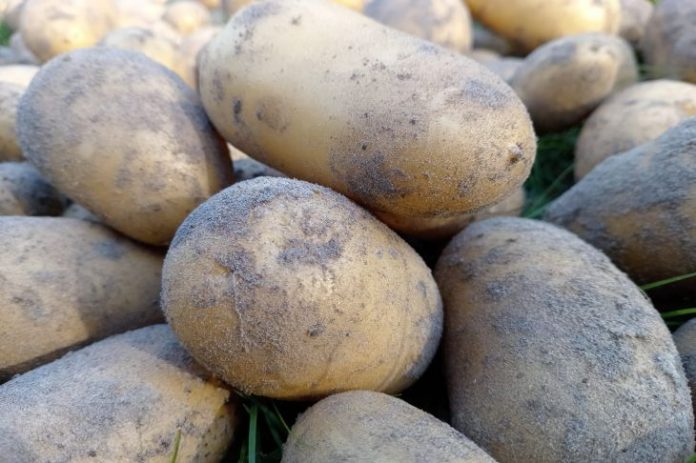The calendar summer is coming to an end.
In many suburban areas, potato beds will be completely vacant in just a few weeks.
You shouldn’t leave these areas empty. It is better to plant a plant in them that will restore the fertility of the soil.
We are, of course, talking about green manure. But what kind of ‘green fertilizer’ is ideal for a bed where potatoes were grown?
Which representative of the flora will restore the soil so much that the area will become suitable for replanting nightshade next season?
What to plant in the garden after harvesting potatoes
It is desirable that some representative of the legume family begin to grow in this place.
Ideal options: peas, lupine, alfalfa.
A good alternative is rye.
Planting the above-mentioned green manures is a guarantee of a quick improvement in the soil condition.
The soil cover will be completely restored, will become loose and airy.
Next year, potatoes can be planted in the same place. The result, most likely, will be an even more abundant harvest of nightshade.
The calendar summer is coming to an end.
In many suburban areas, potato beds will be completely vacant in just a few weeks.
You shouldn’t leave these areas empty. It is better to plant a plant in them that will restore the fertility of the soil.
We are, of course, talking about green manure. But what kind of ‘green fertilizer’ is ideal for a bed where potatoes were grown?
Which representative of the flora will restore the soil so much that the area will become suitable for replanting nightshade next season?
What to plant in the garden after harvesting potatoes
It is desirable that some representative of the legume family begin to grow in this place.
Ideal options: peas, lupine, alfalfa.
A good alternative is rye.
Planting the above-mentioned green manures is a guarantee of a quick improvement in the soil condition.
The soil cover will be completely restored, will become loose and airy.
Next year, potatoes can be planted in the same place. The result, most likely, will be an even more abundant harvest of nightshade.
The calendar summer is coming to an end.
In many suburban areas, potato beds will be completely vacant in just a few weeks.
You shouldn’t leave these areas empty. It is better to plant a plant in them that will restore the fertility of the soil.
We are, of course, talking about green manure. But what kind of ‘green fertilizer’ is ideal for a bed where potatoes were grown?
Which representative of the flora will restore the soil so much that the area will become suitable for replanting nightshade next season?
What to plant in the garden after harvesting potatoes
It is desirable that some representative of the legume family begin to grow in this place.
Ideal options: peas, lupine, alfalfa.
A good alternative is rye.
Planting the above-mentioned green manures is a guarantee of a quick improvement in the soil condition.
The soil cover will be completely restored, will become loose and airy.
Next year, potatoes can be planted in the same place. The result, most likely, will be an even more abundant harvest of nightshade.
The calendar summer is coming to an end.
In many suburban areas, potato beds will be completely vacant in just a few weeks.
You shouldn’t leave these areas empty. It is better to plant a plant in them that will restore the fertility of the soil.
We are, of course, talking about green manure. But what kind of ‘green fertilizer’ is ideal for a bed where potatoes were grown?
Which representative of the flora will restore the soil so much that the area will become suitable for replanting nightshade next season?
What to plant in the garden after harvesting potatoes
It is desirable that some representative of the legume family begin to grow in this place.
Ideal options: peas, lupines, alfalfa.
The calendar summer is coming to an end.
In many suburban areas, potato beds will be completely vacant in just a few weeks.
You shouldn’t leave these areas empty. It is better to plant a plant in them that will restore the fertility of the soil.
We are, of course, talking about green manure. But what kind of ‘green fertilizer’ is ideal for a bed where potatoes were grown?
Which flora will restore the soil so much that the area will be suitable for replanting nightshade next season?
The calendar summer is coming to an end..
In many suburban areas, potato beds will be completely vacant in just a few weeks..
You shouldn’t leave these areas empty. It’s better to plant a plant on them that will restore the soil’s fertility.
We are, of course, talking about green manure.But what kind of ‘green fertilizer’ is ideal for a bed where potatoes were grown?
Which representative of the flora will restore the soil so much that the area will become suitable for replanting nightshade next season?
What to plant in the bed after harvesting potatoes
It is desirable that some representative of the legume family begin to grow in this place.
Ideal options: peas, lupine, alfalfa.
A good alternative is rye.
Planting the above-mentioned green manures is a guarantee of a quick improvement in the soil condition.
The soil cover will be completely restored, will become loose and airy.
Next year, potatoes can be planted in the same place. The result, most likely, will be an even more abundant harvest of nightshade.


